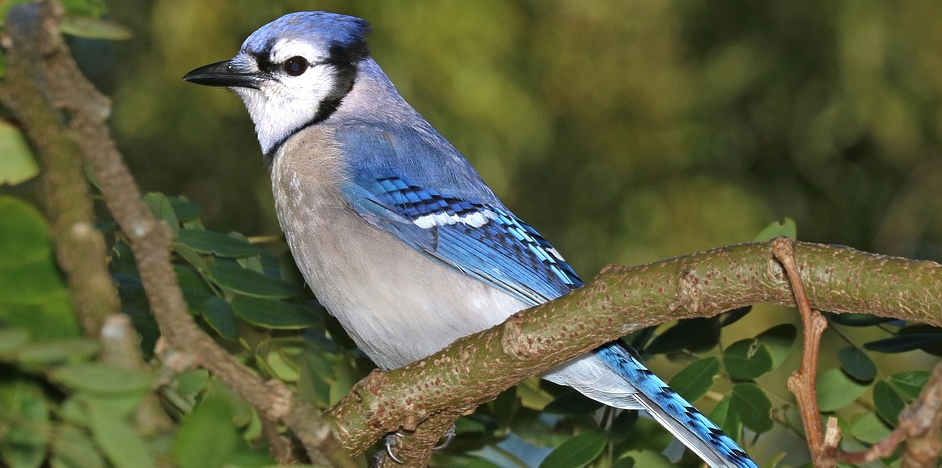Blue Jays Unveiled: Exploring 5 Intriguing and Uncommon Facts about These Vibrant Avians

Introduction
Blue Jays, with their striking azure plumage and bold personalities, are a familiar sight in North America. However, beyond their vibrant appearance and distinctive calls, these birds harbor a plethora of peculiar traits and behaviors. This extensive article aims to unravel five weird and fascinating facts about Blue Jays, shedding light on the quirks that make them stand out in the avian world.
Section 1: The Optical Illusion of Color
1.1 Dynamic Coloration
Blue Jays are renowned for their vivid blue plumage, but here’s the weird twist: their feathers aren’t actually blue. The vibrant hue is a result of microscopic structures in the feathers that scatter light, creating an optical illusion of blue. The feathers contain no blue pigments, making the coloration an extraordinary example of structural coloration in the avian kingdom.
1.2 Molting Mysteries
The weirdness continues during the molting process. As Blue Jays molt, the worn-out feathers are replaced with new ones. Interestingly, the new feathers initially appear gray or brown. It’s only when sunlight hits these feathers that the mesmerizing blue color becomes apparent. This molting phenomenon adds an extra layer of intrigue to the dynamic appearance of Blue Jays throughout the year.
Section 2: Mimicry Maestros
2.1 Vocal Versatility
Blue Jays are not only adept at mimicking other bird species but also showcase their ability to imitate various sounds from their surroundings. They can mimic the calls of hawks, crows, and even human-made noises such as car alarms. This vocal versatility serves multiple purposes, including confusing predators, communicating within their social groups, and potentially deterring other birds from their territories.
2.2 Deceptive Decoys
In addition to vocal mimicry, Blue Jays are known to imitate the calls of raptors as a deceptive tactic. By mimicking the cries of predators, they can induce fear and cause other birds to abandon their nests temporarily. This cunning strategy provides Blue Jays with opportunities to pilfer eggs or nestlings from unguarded nests, showcasing their resourcefulness and adaptability.
Section 3: Acorn Enthusiasts and Hoarders
3.1 Arboreal Archivists
Blue Jays have a penchant for acorns, and their behavior during the fall is particularly intriguing. These birds are accomplished hoarders, collecting and caching acorns for future consumption. What makes this behavior weird is the sheer quantity of acorns Blue Jays can stash. They are known to hide thousands of acorns in various locations, relying on their spatial memory to retrieve their hidden treasures later.
3.2 Accidental Foresters
Blue Jays inadvertently contribute to the spread of oak trees in their habitat. Some cached acorns are forgotten or abandoned by the birds, allowing them to germinate and grow into new oak trees. This accidental reforestation highlights the unintentional role Blue Jays play in shaping their ecosystem by aiding in the dispersal and establishment of oak trees.
Section 4: Social Dynamics and Hierarchy
4.1 Complex Social Structures
Blue Jays exhibit intricate social structures within their flocks. These birds form stable family groups and maintain strong social bonds. However, they are not immune to internal conflicts. Blue Jays engage in dominance displays, vocalizations, and occasional aggressive behaviors to establish and maintain their positions within the social hierarchy.
4.2 Funerary Rituals
One of the weirdest aspects of Blue Jay behavior is their response to death within their group. When a Blue Jay dies, its companions may gather around the deceased bird and exhibit behaviors reminiscent of a funeral. This includes calling out and behaving in a subdued manner. While the exact reasons for this funerary behavior remain speculative, it suggests a level of emotional complexity and social awareness among Blue Jays.
Section 5: Intelligence and Problem-Solving
5.1 Tool Users and Problem Solvers
Blue Jays showcase a high level of intelligence and problem-solving abilities. They are known to use tools, such as manipulating sticks to extract insects from tree bark. Their cognitive prowess extends to adapting to novel situations and learning from experiences. Blue Jays have demonstrated the ability to solve puzzles, retrieve food from complex devices, and even exhibit a form of tactical deception.
5.2 Memory Masters
Blue Jays possess exceptional spatial memory, crucial for locating their hidden caches of food. Studies have shown that they can remember the locations of thousands of individual caches and retrieve them months later. This remarkable memory capacity plays a vital role in their survival and foraging strategies, showcasing the intricate cognitive abilities of these charismatic birds.
Conclusion: The Blue Jay Chronicles
In conclusion, Blue Jays are far more than just beautiful blue birds; they are a tapestry of weird and wonderful traits that set them apart in the avian realm. From the optical illusion of their vibrant plumage to their mimicry prowess, acorn hoarding habits, complex social dynamics, and remarkable intelligence, Blue Jays continue to captivate bird enthusiasts and scientists alike. Observing and understanding these quirky behaviors not only adds to our appreciation of these birds but also unravels the intricacies of nature’s design, where weirdness often reveals the genius of adaptation and survival.




